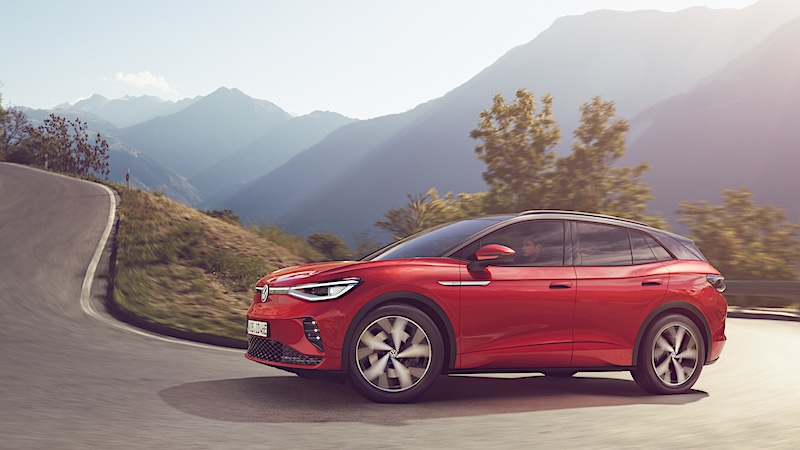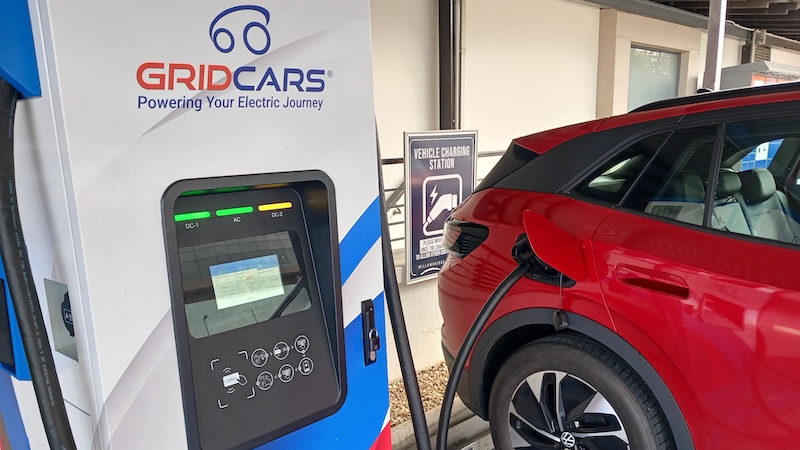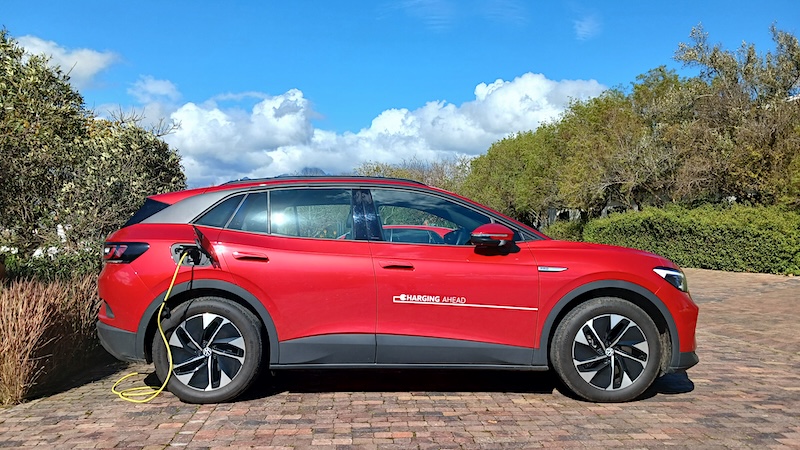In 2025, the wait is over for South African EV enthusiasts, as Volkswagen’s eye-catching ID.4 cross-over hits the road. The question is: can it make waves in the local market?
The car we drove is the pre-facelift version of the ID.4, which allowed us to experience its current features and noting areas where the new 2025 model promises enhancements. Here’s an in-depth look at what makes the ID.4 intriguing and what South Africans can expect from the improved version when it officially arrives.

Spacious interior and practical design
One of the first things that stood out was the sheer spaciousness of the ID.4’s interior. With a generously sized boot (without a spare, though) and plenty of cabin space, it’s clear that VW has designed this vehicle with family use in mind.

The clever placement of armrests (shown above), reminiscent of the older Land Rover Discovery design, offers adjustable comfort and contributes to the open, airy feel of the cabin. Dark-coloured sun visors, equipped with mirrors and lights, add a premium feel, while the charcoal headlining and pillars help conceal potential fingerprints.

The ID.4’s instrument screen (shown above) moves with the steering column, an elegant and practical touch that ensures visibility even after adjusting the wheel’s reach. This thoughtful design adds a layer of adaptability to the car’s interior and shows VW’s attention to detail in making the ID.4 user-friendly.
However, the lack of some conveniences – like electric seats and an electric tailgate – might leave some wanting. These will be available as options or standard equipment in the models available in South Africa next year.

Range and efficiency
The ID.4’s range is undoubtedly one of its strongest features. On a nearly full charge (98%), it displayed an impressive range of 471 km, and after some driving, it held strong at 340 km with 72% battery remaining. This translates to genuine practicality for everyday commutes and even some long-distance travel, reducing the range anxiety often associated with EVs.

At the end of the week, the car indicated an energy consumption figure of 16,9 kWh per 100 km, showcasing its efficiency. This makes the ID.4 a cost-effective option for electric driving. And while the current model might lack performance, the model arriving in South African in 2025 will have a more powerful motor and faster charging capabilities.
Driving experience
The ID.4’s driving comfort is generally good, with instant torque providing adequate acceleration. However, its handling left us with mixed impressions. Compared to sharper-handling vehicles, like the Ford Territory, the ID.4 feels a bit “wobbly.”

There’s noticeable body roll around corners, and the steering feels indirect, with a lag that makes it less responsive than VW’s Tiguan, Golf, or Polo. These issues should see some improvement in the 2025 update, as VW has recalibrated the suspension for a more balanced and dynamic driving experience.
More regen, please!
One area I hoped would be optimised was regenerative braking. The ID.4 lets you switch between B (Battery) and D (Drive) modes, with B mode offering more (but still not enough) regen. However, switching between them requires toggling of the drive selector rather than, say, pulling convenient paddles on the steering wheel.

More customisable regen settings could have provided a more engaging and intuitive driving experience, similar to the Audi e-Tron’s adjustable regen paddles.
Cabin tech
The infotainment screen’s display is excellent in quality – clear, crisp, and visually appealing. Unfortunately, the user experience falls short. The menu navigation is clunky and can be frustrating, and touch controls lack the responsiveness one might expect.

The new version arriving in South Africa will come with a larger, updated 12,9-inch display, a redesigned operating system, and illuminated touch controls for volume and temperature. According to media reports, these upgrades provide an improved user experience and address the buggy software issues present in the current model.
Volkswagen has also moved the gear selector from the instrument cluster to a steering column stalk (similar to the VW ID. Buzz), thereby improving ergonomics.

Wind noise and sound system
On the highway, the ID.4 allowed more wind noise into the cabin than expected, despite there being minimal wind outside. This detracted slightly from the car’s otherwise smooth cruising feel. The upcoming ID.4’s recalibrated suspension and sound insulation improvements should address this shortcoming.

For those who value sound quality, the updated ID.4 will offer a 10-speaker Harman Kardon system, promising to enhance the listening experience over the standard audio setup.
The updated VW ID.4
The ID.4s coming to South Africa will be notably more powerful than the example we drove. The base “Pro” variant will feature a 82 kWh battery (77 kWh usable) paired with a single rear-mounted motor. It produces 210 kW and 535 Nm of torque, a substantial jump in power, and enough for a 0-100 km/h sprint in 6,7 seconds.

RWD or AWD
The 4Motion all-wheel-drive version of the ID.4 Pro could also be on its way. It uses the same battery as the rear-wheel-drive car, but gets a second motor. Torque output increases to a heady maximum of 679 Nm (more than the Touareg V6 TDI’s 600 Nm!), while it needs only 6,6 seconds to reach 100 km/h from standstill.
Additionally, range has increased slightly to a claimed 542 km, reducing the frequency of charging stops.

To further enhance long journeys, VW has incorporated new thermal management features to precondition the battery for quicker charging. With a maximum charge rate of 135 kW, the updated ID.4 will allow faster top-ups, perfect for those road-tripping across South Africa.
Equipment
In terms of standard equipment, South African customers can expect 19-inch alloy wheels, LED headlights, heated front seats, wireless Apple CarPlay and Android Auto, a wireless phone charging pad, and adaptive cruise control.

In the United Kingdom (UK), the Style trim level adds a panoramic glass roof, LED matrix headlights, and a height-adjustable boot floor. Whether the specifications of ‘our’ ID.4s will match those available to our British brethren will be revealed soon.
Final thoughts
The VW ID.4 combines spaciousness, impressive range, and efficiency in a well-thought-out package. While the pre-facelift model I drove left a few areas for improvement, the updated ID.4 is more powerful, better equipped, and reported to be more refined.

The added range, upgraded infotainment, and increased power should make this a very appealing electric cross-over when it officially arrives on South African shores in 2025.
Leasing and retail prices of the Volkswagen ID.4 will be released closer to its local launch.





























